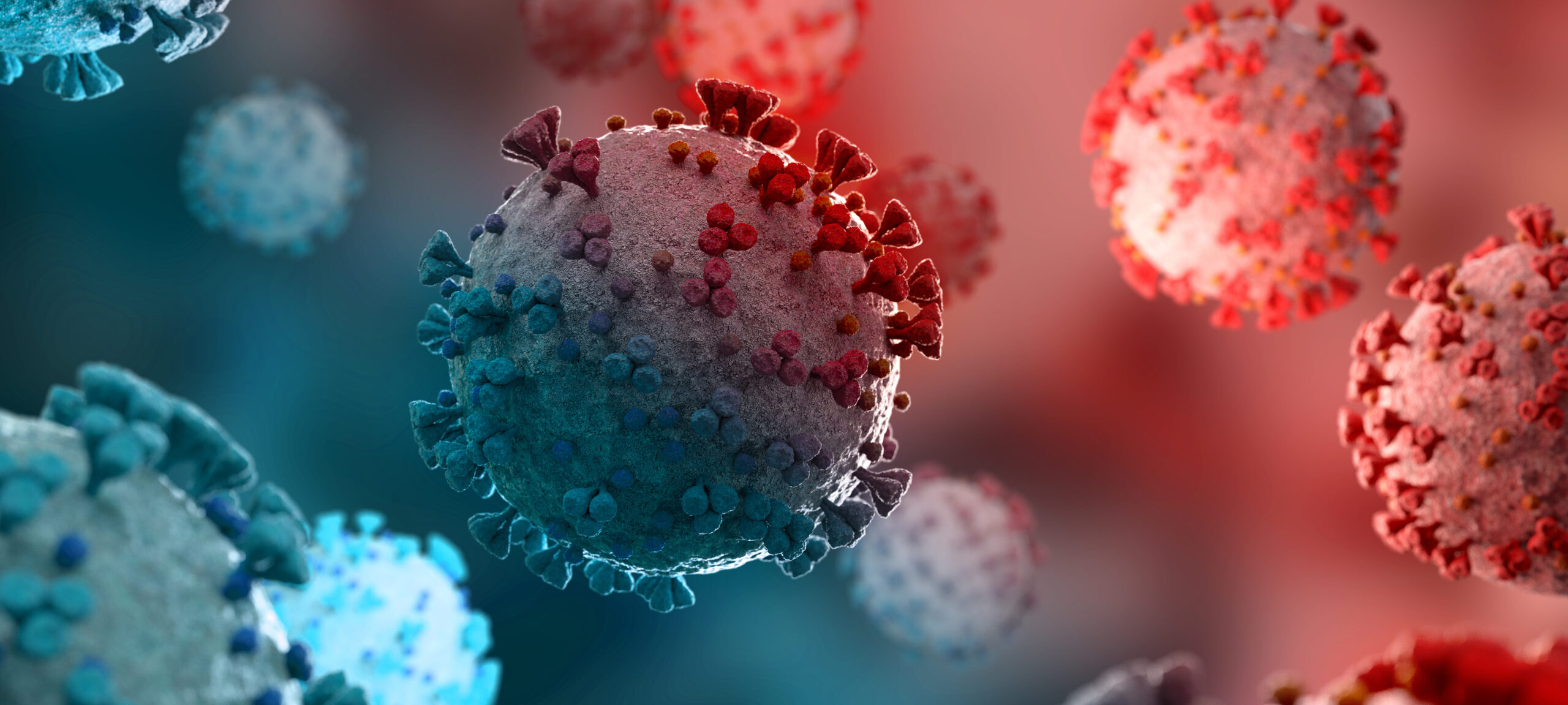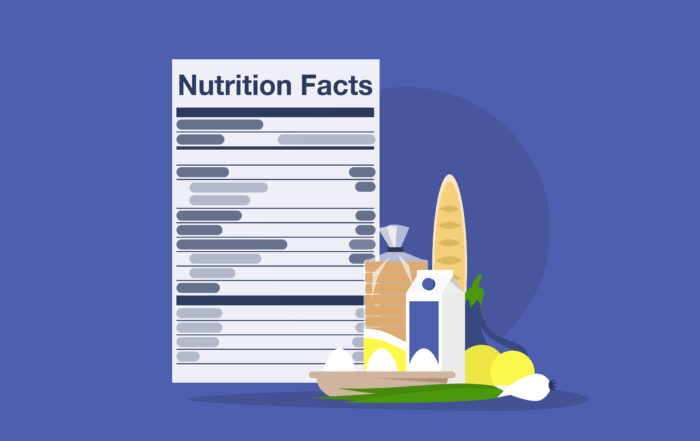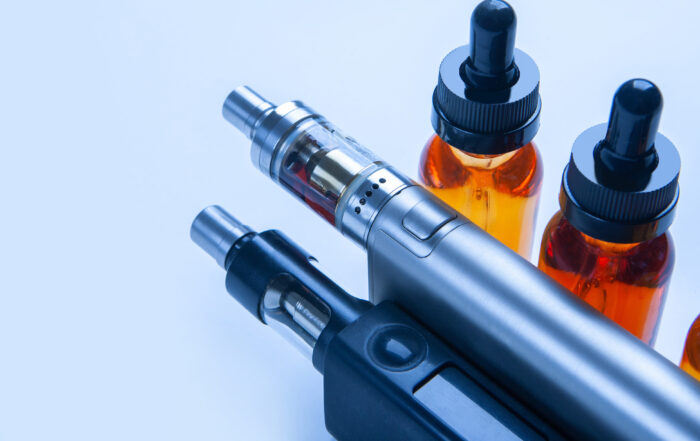
FDA Emergency Use Authorization: A Brief History From 9/11 to COVID-19
The ongoing fight against COVID-19 has brought widespread public attention to FDA and its power to grant emergency use authorizations (EUAs), which permits FDA to authorize formally unapproved medical products for emergency use against threats to public health and safety.
Under § 564 of the Federal Food, Drug, and Cosmetic Act (FDCA), issuance of an EUA requires a determination by secretaries of the Department of Homeland Security, the Department of Defense, or the Department of Health and Human Services (HHS) that an emergency exists, as well as a declaration by the HHS Secretary that emergency circumstances exist warranting the issuance of EUAs.[1] Unlike the strict standard of safety and efficacy used by FDA for ordinary product approvals, issuance of an EUA only requires FDA to conclude that:
- it is reasonable to believe that a given product “may be effective” as an emergency countermeasure,
- the known and potential benefits of authorization outweigh the known and potential risks, and
- no formally approved alternatives are available or adequate at the time.[2]
EUAs are playing a critical role in responding to the current COVID-19 pandemic, a situation evolving constantly with near-daily emergency authorizations of medical countermeasures. In the past eighteen months, FDA has issued an unprecedented number of EUAs for medical countermeasures that have yet to run the gauntlet of FDA’s extensive formal approval process.
My forthcoming article in the Food and Drug Law Journal chronicles the evolution of this important power from its inception through its use against COVID-19, the most consequential public health emergency since the 1918 Spanish flu. If we want to know where the future of emergency use authorization is headed, we have to look to its past and present. The relatively short history of EUA demonstrates how its present-day use against COVID-19 raises essential questions about the role of political oversight and expert judgment in times of crisis—and points to several key policy considerations moving forward.
The Prehistory of EUA
The first historical event to foreshadow the major issues surrounding FDA’s EUA power was the thalidomide tragedy of the 1950s and 60s, when a new drug put into circulation in Europe as a treatment for morning sickness was later found to have resulted in severe birth defects.[3] Remembered as one of the worst public health disasters in recent history, the drug’s introduction to market remains a key reference point for those who advocate for extensive and strict standards of clinical review before approving new food and drug products.
In 1976, a soldier in New Jersey contracted a fatal case of influenza.[4] CDC acquired viral samples and feared that Influenza A, the class of influenza viruses responsible for all historic flu pandemics, might have undergone an antigenic shift—a convergence of separate strains into a new and deadlier form—that could be as significant as the form that caused the Spanish flu of 1918. The federal government quickly developed an unprecedented plan to manufacture and administer a “swine flu” vaccine with which to immunize the entire country. While the World Health Organization advocated a more cautious approach, President Gerald Ford, who was running for reelection in 1976, was reportedly pushing hard for rapid implementation of a national immunization program.[5] After millions had been vaccinated, reports suggested that the vaccine might have been causing Guillain-Barré syndrome.[6] A pandemic never materialized.
In their post-mortem study of the 1976 swine flu affair, policy analysts Richard Neustadt and Harvey Fineberg described the event as a policymaking disaster.[7] Yet they also expressed their concern that the event would be wrongly remembered as a simple case of government overreaction—and, accordingly, that policymakers and the general public would overemphasize the dangers of responding too swiftly to warning signs of a future public health emergency.
Finally, the AIDS epidemic led to an early precursor of FDA’s modern-day EUA authority. In the late 1980s, studies suggested that an investigational drug called DDI might have benefits for AIDS patients who were unable to tolerate other medications.[8] DDI lacked formal approval, and FDA regulators were wary of endorsing a drug that had not been formally proven safe and effective. Others—including Dr. Anthony Fauci, Director of the National Institute of Allergy and Infectious Diseases—believed the risk was justified by the number of lives that could be saved.[9] Fauci proposed a new “parallel track” system, which would make DDI available to eligible patients while continuing to put the drug through clinical trials.[10] Other means of circumventing FDA’s ordinary approval process already existed at the time, but Fauci’s proposal attracted the attention of President George H.W. Bush, whose support encouraged FDA to adopt the process and administer DDI to patients in need.[11]
Some public health officials worried that making DDI available too early would not only invite desperate patients to take undue risks, but also could make it harder on the whole to gather accurate data about the risks involved for future patients. Ordinarily, the only way for members of the public to get access to a new drug such as DDI would be to volunteer for clinical trials. Allowing people to obtain the drug without entering trials would disincentivize potential volunteers from entering those trials, making it more difficult to find enough subjects to test the drug in the first place. In addition, setting a precedent with one drug could result in a future in which members of the public generally would be less willing to participate in clinical trials, undermining the testing and evaluation process as a whole. Regulators would have to weigh these concerns against the value of getting potentially useful drugs to market quickly.
The Enactment and Early Years of EUA
Emergency use authorization owes its inception to the War on Terror. After the events of September 11, 2001 and subsequent anthrax mail attacks, Congress responded to widespread concerns over the threat of bioterrorism by enacting the Project BioShield Act of 2004.[12] The Act called for $5.6 billion in appropriations for vaccine purchases and for stockpiling of emergency countermeasures—including vaccines that had not been fully tested for safety or efficacy.[13] And in order to make distribution of those countermeasures possible in the event of an emergency, Congress amended the FDCA to permit FDA to circumvent its formal approval process by authorizing formally unapproved products as emergency countermeasures.[14] The congressional record indicates that Congress was focused in particular on the threat of bioterror, rather than preparing for a pandemic of natural origin.[15]
In 2005, concerns over the apparent rise of avian flu led to the enactment of P.L. 109-148, also known as the PREP Act. The threat of a coming flu pandemic only underscored the apparent need for a strong liability shield to accompany FDA’s new authority: it required 1) a fast process to approve products in an emergency; and 2) adequate guarantees of protection for providers of risky countermeasures for which there would not be time to conduct ordinary testing. The proposal proved controversial; some viewed the Act as necessary to incentivize the private sector to produce needed countermeasures for a public health emergency, while others viewed it as favoring the pharmaceutical industry at the expense of injured parties and their right to damages. Senate Democrats decried the liability shield as a “Christmas present to the drug industry and a bag of coal to everyday Americans.”[16]
The debate surrounding the PREP Act’s enactment pointed to an essential issue: where should the loss fall in times of crisis? Mounting a fast and effective response to emergencies requires that policymakers and providers of countermeasures take risks that will almost surely be imposed on the public; doing so is bound to have adverse effects for at least a small number of unlucky recipients. In such cases, a decision has to be made as to who will (and who should) bear the loss when private parties confront those risks by engaging in conduct that benefits both themselves and the general public.
FDA’s newfound EUA authority would be used sparingly for the first sixteen years following its enactment. During that time, its most extensive use was in response to the H1N1 swine flu pandemic of 2009, when it was used to authorize medical equipment and expired lots of formally approved drug products.[17] Health policy experts would look back on FDA’s use of EUA against H1N1 as an overall success; it proved that EUAs work, and that when used responsibly and in coordination with other agencies, they can facilitate a rapid and effective federal response to a pandemic. EUA would also be used to authorize occasional countermeasures in anticipation of MERS, Ebola, Zika, and other epidemics, none of which ultimately materialized in the United States.
EUAs Against COVID-19
FDA’s response to the COVID-19 pandemic has made the most significant use of EUA authorization since its inception. In February 2020, HHS Secretary Alex Azar declared the spread of SARS-CoV-2 a national health emergency warranting emergency authorization of diagnostic tests,[18] followed by declarations warranting emergency authorization for a variety of other countermeasures.
Since then, FDA has issued well over 400 EUAs for personal protective equipment, medical equipment, in vitro diagnostic products, drug products, and, most notably, vaccines (compared to a total of twenty-two EUAs in response to H1N1 in 2009). An EUA had never before been granted for a brand-new vaccine; the only vaccine ever to have received an EUA prior to the current pandemic was AVA, an anthrax vaccine that had already been approved for other purposes when it was granted an EUA in 2005. The comparatively high stakes of administering a vaccine to people who are otherwise healthy led FDA to commit itself to heightened standards of review, or “EUA plus,” in evaluating COVID-19 vaccines for emergency authorization.[19] FDA has authorized three COVID-19 vaccines thus far: one by Pfizer-BioNTech on December 11, 2020; one by Moderna on December 18, 2020; and one by Johnson and Johnson on February 27, 2021. FDA amended the authorizations for the Pfizer-BioNTech and Moderna vaccines on August 12, 2021 to permit a third dose in solid organ recipients and others who are immunocompromised to a comparable degree.[20] FDA granted the Pfizer-BioNTech vaccine formal approval on August 21, 2021.[21]
FDA’s exercise of discretion in issuing EUAs has not been without controversy. The politicization of the pandemic by former President Donald Trump has added a political dimension to FDA’s decision making as an administrative agency run by a presidential appointee.[22] Many have criticized the Trump White House for encroaching on FDA’s independence and failing to uphold basic standards of respect for scientific evidence, technical expertise, and political independence. Trump notoriously pressured FDA officials into authorizing chloroquine and hydroxychloroquine, anti-malarial drugs that many believed could pose substantial risks for COVID-19 patients.[23] The authorization for those drugs came only days after Trump publicly endorsed them and would be revoked months later by FDA. Public health experts were similarly concerned by FDA’s decision to authorize SARS-CoV-2 convalescent plasma on the eve of the Republican National Convention.[24] Even FDA’s decision to grant its first vaccine authorization to Pfizer-BioNTech was somewhat controversial: White House Chief of Staff Mark Meadows allegedly contacted FDA Commissioner Stephen Hahn the day the vaccine would be authorized, demanding his resignation unless it was authorized by end of day.[25]
Although President Joseph Biden is generally recognized as having demonstrated greater respect for scientific expertise since taking office on January 21, 2021, his administration has also faced criticism for its application of scientific evidence to health policy. In particular, critics argue that the administration has aggressively endorsed third doses, or “booster shots,” of the COVID-19 vaccines for the general public without sufficient evidence that third doses are effective for those without weakened immune systems.[26] The White House announced in August its intent to have booster shots authorized by September. Two high-level FDA regulators, Marion Gruber and Philip Krause, announced their resignation later that month, allegedly out of frustration that the White House and FDA Commissioner appeared to be putting politics ahead of empirical data in pressuring the agency to authorize booster shots.[27]
Even when making decisions without overt political interference, FDA has confronted difficult decisions in exercising its discretion to grant EUAs. For example, FDA decided in the spring of 2020 to address widespread testing shortages by issuing “umbrella” EUAs for entire categories of diagnostic and antibody tests (as well as masks and other protective equipment) ex ante—allowing those tests to market before evaluating them case by case.[28] FDA revoked this policy on July 21, 2020, announcing that it would begin reviewing individual requests for EUAs for antibody tests on a case-by-case basis to ensure compliance with statutory EUA requirements.[29]
Key Themes and Issues Surrounding EUAs
Looking back through the history of EUA reveals three major themes.
Political influence: First, there is the issue of influence by the White House (and political actors generally) on FDA decision making—sometimes in ways that appear motivated by the public interest, other times by political or personal interest. As the swine flu affair of 1976 demonstrates, Donald Trump was not the first president to have pushed for a speedy vaccination effort while seeking reelection. As long as health regulators are answerable to political officials, there will always be some risk of political influence interfering with the policymaking process. This reflects a fundamental tension between respecting technical expertise and ensuring that technical experts are held accountable to elected officials (and, ultimately, to the public will).
Weighing risks: Second, the history of EUA points to a deep dilemma between protecting individuals and benefiting the collective in times of crisis—between following protocol and saving lives faster. How should health regulators weigh the risk to individuals posed by unapproved and potentially harmful products against the benefit to the collective in responding quickly to a public health emergency? When FDA authorizes a promising but uncertain solution to a pandemic, it necessarily exposes individuals to risk; there is no avoiding that. Even when a drug or vaccine seems to carry a low risk of serious side effects, the decision to authorize still reflects a willingness to actively put some people at greater risk of injury or death in the hope of preventing a greater amount of suffering. There will always be some tension between those hoping to avoid the next AIDS crisis and those hoping to avoid the next thalidomide.
This issue applies to tests as well as drug products as vaccines. For example, in using an umbrella EUA for test products, FDA made a value judgment that the risk of making unreliable tests available to the public was outweighed by the benefit of having any testing data at all. (FDA states that as of July 2021, it has received over 1,486 reports concerning fraudulent products related to COVID-19.[30]) Although FDA’s decision risks allowing faulty or fraudulent tests to come to market, that might simply be an unavoidable consequence of taking a practical and usefully permissive approach to emergency response. How one views FDA’s decision will reflect one’s views on the proper balance of risks and benefits—and on the tradeoff between carefully following protocol on the one hand and responding quickly with a new and uncertain solution on the other.
FDA and the public: Third, there is the question of how to promote trust and compliance with public health measures among the general public. Despite how rigorously the three current COVID vaccines have been tested, as much as 14% of the American public allegedly refuse to receive a COVID-19 vaccine.[31] Health regulators may have been able to take public trust for granted in previous crises, but COVID-19 has thrust it into the foreground.
Of course, the fact that EUAs require a less rigidly defined standard of review than formal approval does not mean that countermeasures reviewed by that standard are not tested rigorously. Today’s vaccines against COVID-19 have been tested with unprecedented focus and urgency,[32] and public health experts have gone to considerable lengths to address widespread concerns over transparency and public trust by being forthright about observed side effects of the vaccines.[33] One irony of heightened transparency is that reports of relatively infrequent adverse effects are likelier to reach the public—and are likelier to have a disproportionate emotional impact on public opinion compared to good news. The risk that negativity bias and other sources of misunderstanding will complicate FDA’s efforts at building public trust only adds to the policy landscape that faces FDA when deciding how to use its emergency powers.
EUAs and Vaccine Mandates
A public debate has erupted in the United States as to whether to mandate vaccination against COVID-19.[34] On September 9, 2021, following FDA’s approval of the Pfizer-BioNTech vaccine, President Biden announced a series of vaccine mandates affecting approximately 100 million employees in the federal government and private sector.[35] Prior to FDA’s decision, opponents of mandatory vaccination had attempted to support their positions by appealing to the fact that the three vaccines had been granted only emergency authorization rather than full formal approval.[36] A number of organizations had suggested that they intended to wait until the vaccines were fully approved before making vaccination mandatory for their members.[37] Even with one of the three vaccines having received full approval, President Biden’s announcement has been met with bitter resistance in conservative circles.[38]
The debate over vaccine mandates—including the issue of whether to expedite the formal approval process to spur support for mandates—poses a policy dilemma that is in some ways inverse to that of the AIDS crisis. In 1989, members of the public were imploring FDA to sidestep its lengthy approval process and make a potentially life-saving drug available to desperate patients. Today, FDA is willing to grant emergency authorization (after extensive review) to three desperately needed vaccines in the middle of a pandemic, despite the fact that a substantial minority of the public is opposed to those vaccines. Whereas the challenge in the AIDS crisis was one of trying to overcome conservative regulatory hurdles in accordance with the public will, today’s challenge is one of trying to convince the public to accept the help.
The EUA mechanism was intended as a way of getting countermeasures to people who need them fast. But a public that is reluctant to accept those countermeasures adds a new wrinkle to health policy. Not only does it frustrate FDA’s efforts to respond as best they can to a national emergency, but it also poses a new question that may inform their decision making: will the use of a process viewed as being less rigorous than formal approval affect public trust? And if so, will the downsides of granting emergency authorization for a given countermeasure detract from its advantages?
This problem may be unique to COVID-19. One hopes that future public health emergencies will not be subjected to political partisanship to the degree seen in 2020 and 2021. But it does demonstrate how FDA can be forced to consider various forms of risks and benefits—institutional considerations, rather than purely medical ones—that technically fall outside its realm of expertise.
Policy Frameworks for EUAs
The controversy over DDI during the AIDS crisis exemplified a basic dilemma: when do the circumstances justify taking risks in times of emergency, especially when the likelihood and magnitude of those risks are unknown? This dilemma applies to FDA’s response to COVID-19 in particular. Antimalarial drugs that were initially granted EUAs for COVID-19 patients are now believed to have considerable side effects.[39] Even when FDA ultimately decides to revoke an EUA for a given drug, countless individuals could suffer adverse effects in the time it takes to implement the revocation. Other drugs with their own sets of risks may soon be up for consideration for EUAs. They will pose similar questions as to how best to weigh tradeoffs in uncertain and high-stakes situations.
Taking into account the EUA experience to date, one can imagine three possible frameworks or approaches through which to analyze the ethics of EUAs.
- Outcome-oriented: One approach would be to focus strictly on outcomes, weighing the total risks and benefits of granting an EUA against the risk of letting an emergency continue while waiting for formal approval.
- Duty-oriented: A second approach would endorse the principle that adhering to rigorous procedures and traditional practice is the most reliable way for regulators to uphold their duty to protect citizens from undue risks to health and safety. Proponents might argue that history has already shown how easily the rush to address emergencies can lead to judgments that later prove regrettable—and that it would be worse for regulators to take active steps that could make some citizens worse off (such as authorizing an unapproved and potentially harmful product) than to allow a public health crisis to continue.
- Autonomy-oriented: A third approach would emphasize personal autonomy above all else, defaulting in almost all cases to making emergency products available so that individuals can make informed choices for themselves and their families.
No matter what approach regulators choose to adopt, history suggests a checklist of general questions relevant to the EUA process. These involve the institutional context of EUA authority and should be considered alongside medical and epidemiological questions:
- Should the product in question be made available on a conditional basis to a specific population or sub-population?
- Would making the product widely available interfere with FDA’s ability to complete its ordinary investigative protocol—for example, by eliminating an incentive to volunteer for clinical trials?
- What, given the circumstances, is the risk of political interference with the EUA process, both in deciding whether to grant an EUA and in determining how it would be applied?
- What precedent would a given EUA set for future FDA decision making?
- What effect would the circumstances surrounding a given EUA have on public trust in FDA and willingness to comply with public health guidance, regarding both the emergency at issue and future emergencies?
Keeping these factors in mind would keep decision makers attentive not just to practical and epidemiological considerations, but also to the long-term integrity and reliability of the EUA process.[40]
Restructuring the EUA process
The history of EUAs (including relevant events prior to Project BioShield) also raises questions as to whether the EUA process could usefully be reorganized, especially with respect to risk assessment. For example, some countermeasures, such as DDI or hydroxychloroquine, pose a risk of potentially serious adverse health effects; others, such as AVA or expired flu medicines, are reasonably certain not to pose a risk of serious side effects, even if they might prove ineffective. Would it be useful for regulators to distinguish these two levels of risk and weigh them differently when deciding whether to grant an EUA? We can imagine creating two subcategories of EUAs: “high-risk” EUAs, for which there is reason to suspect a risk of serious adverse effects, and “low-risk” EUAs, for which the only likely risk is ineffectiveness. (A “moderate-risk” category may also be appropriate.) Regulators might include additional safeguards or investigative steps in cases involving high-risk countermeasures, and perhaps even make the review process simpler and faster for countermeasures that appear to have few downsides on first impression.
Does the ongoing debate over the credibility of COVID-19 vaccine EUAs in contrast to formal approval suggest that FDA and Congress should restructure those processes more broadly? For example, would it help ameliorate public concern—and make it harder to raise unfounded doubts about the EUA process—if EUAs were assimilated into the formal approval process? Regulators could stratify the formal approval process into multiple categories along a spectrum; this could include replacing the separate “EUA” designation with something along the lines of an “Approval Category A” (the “emergency category,” or highest level of urgency) that would preserve the essence of the EUA process. This sort of restructuring might seem like little more than a cosmetic change, but that would depend on whether it also entailed desirable substantive reforms. And even a cosmetic change could be justified if it helped shore up the public credibility of emergency authorizations.
Beyond COVID-19
Lawmakers and policymakers place tremendous value in precedent, be it written or historical. There is little precedent for FDA to rely on in making EUA-related decisions; even the use of EUAs in the H1N1 crisis of 2009 pales in comparison. The U.S. has not faced a public health emergency of this magnitude in over a century, yet the emergency powers FDA is relying upon have existed for fewer than twenty years and have been used sparingly until now.
The history of emergency use authorization points to essential dilemmas that will have to be confronted in emergencies to come. These issues cannot be resolved by looking to the statutory text; they will inevitably require hard judgments about how to balance deference to scientific expertise with public accountability, how to integrate empirical analysis and value judgments, and how to allocate risk in times of crisis. FDA’s policy in using its EUA authority has already involved, and may well continue to involve, some of the weightiest public health decisions FDA will ever make. Emergency use authorization has existed for two decades—but the majority of its history is still being written.
[1] 21 U.S.C. § 360bbb-3 (2011).
[2] Id.
[3] See Morton Mintz, “Heroine” of FDA Keeps Bad Drug Off Market, Wash. Post (July 15, 1962), https://www.washingtonpost.com/wp-srv/washtech/longterm/thalidomide/keystories/071598drug.htm [https://perma.cc/7FCN-DNZW]. See also Max Sherman & Steven Strauss, Thalidomide: A Twenty-Five Year Perspective, 41 Food Drug Cosm. L.J. 458, 460 (1986).
[4] For a thorough chronology of the swine flu affair of 1976, see Richard Neustadt & Harvey V. Fineberg, The Swine Flu Affair: Decision-Making on a Slippery Disease (1978).
[5] See Rebecca Kreston, The Public Health Legacy of the 1976 Swine Flu Outbreak, Discover Mag. (Sept. 30, 2013), https://www.discovermagazine.com/health/the-public-health-legacy-of-the-1976-swine-flu-outbreak [https://perma.cc/EU87-QWF6].
[6] David J. Sencer & J. Donald Millar, Reflections on the 1976 Swine Flu Vaccination Program, 12 Emerging Infectious Diseases 29 (2006).
[7] Richard Neustadt & Harvey V. Fineberg, The Swine Flu Affair: Decision-Making on a Slippery Disease (1978).
[8] See Eve Nichols, Expanding Access to Investigational Therapies for HIV Infection and AIDS: March 12–13, 1990 Conference Summary (1991), https://www.ncbi.nlm.nih.gov/books/NBK234129/ [https://perma.cc/V8XV-VA4Y]. For a related policy proposal by HHS, see Expanded Availability of Investigational New Drugs Through a Parallel Track Mechanism for People with AIDS and HIV-Related Disease, 55 Fed. Reg. 20858 (May 21, 1990).
[9] Philip J. Hilts, F.D.A., in Big Shift, Will Permit Use of Experimental Aids Drug, N.Y. Times (Sept. 29, 1989), https://www.nytimes.com/1989/09/29/us/fda-in-big-shift-will-permit-use-of-experimental-aids-drug.html [https://perma.cc/NJG9-XDAN].
[10] See Eve Nichols, Expanding Access to Investigational Therapies for HIV Infection and AIDS: March 12–13, 1990 Conference Summary (1991), https://www.ncbi.nlm.nih.gov/books/NBK234129/ [https://perma.cc/V8XV-VA4Y]. For a related policy proposal by HHS, see Expanded Availability of Investigational New Drugs Through a Parallel Track Mechanism for People with AIDS and HIV-related Disease, 55 Fed. Reg. 20858 (May 21, 1990).
[11] Bob Roehr, Anthony Fauci: A View from the Maelstrom of HIV/AIDS Research and Policy, AARP (May 15, 2011), https://www.aaas.org/news/anthony-fauci-view-maelstrom-hivaids-research-and-policy.
[12] Project BioShield Act of 2004, Pub. L. No. 108-276, 118 Stat. 835 (2004).
[13] See Project BioShield Act § 510.
[14] 21 U.S.C. § 360bbb-3(b)(1) (2011).
[15] See, e.g., 150 Cong. Rec. H5730 (daily ed. July 14, 2004) (statement of Rep. Brown) (describing Project BioShield as a “promising weapon in the battle against terrorism”).
[16] Pandemic Funding, Liability Shield Clear Congress, Ctr. for Infectious Disease Res. & Pol’y (Dec. 28, 2005), https://www.cidrap.umn.edu/news-perspective/2005/12/pandemic-funding-liability-shield-clear-congress [https://perma.cc/NF6B-DEBQ].
[17] U.S. Food & Drug Admin., Historical Information about Device Emergency Use Authorizations (Oct. 28, 2019), https://www.fda.gov/medical-devices/emergency-situations-medical-devices/historical-information-about-device-emergency-use-authorizations [https://perma.cc/3L7S-BB42].
[18] Determination of a Public Health Emergency and Declaration that Circumstances Exist Justifying Authorizations Pursuant to Section 564(b) of the FDCA, 85 Fed. Reg. 7316 (Feb. 4, 2020).
[19] Sarah Owermohle, Marks: Prepare for “EUA-Plus” for Covid Vaccines, Politico (Sept. 11, 2020, 12:06 PM), https://www.politico.com/newsletters/prescription-pulse/2020/09/11/marks-prepare-for-eua-plus-for-covid-vaccines-790343 [https://perma.cc/XG5R-4YEM].
[20] U.S. Food & Drug Admin., Coronavirus (COVID-19) Update: FDA Authorizes Additional Vaccine Dose for Certain Immunocompromised Individuals (Aug. 12, 2021), https://www.fda.gov/news-events/press-announcements/coronavirus-covid-19-update-fda-authorizes-additional-vaccine-dose-certain-immunocompromised.
[21] U.S. Food & Drug Admin., FDA Approves First COVID-19 Vaccine (Aug. 21, 2021), https://www.fda.gov/news-events/press-announcements/fda-approves-first-covid-19-vaccine.
[22] Anna North, Elizabeth Warren Calls for Investigation into Trump’s Politicization of COVID-19, Vox (Aug. 26, 2020), https://www.vox.com/2020/8/26/21402553/trump-covid-19-elizabeth-warren-coronavirus-pandemic-kushner.
[23] Elyse Samuels & Meg Kelly, How False Hope Spread About Hydroxychloroquine to Treat COVID-19—and the Consequences that Followed, Wash. Post (April 13, 2020, 3:00 AM), https://www.washingtonpost.com/politics/2020/04/13/how-false-hope-spread-about-hydroxychloroquine-its-consequences/ [https://perma.cc/RYQ9-Y5Z6]; Andrew Solender, All the Times Trump has Promoted Hydroxychloroquine, Forbes (May 22, 2020, 5:01 PM), https://www.forbes.com/sites/andrewsolender/2020/05/22/all-the-times-trump-promoted-hydroxychloroquine/#402ed75c4643 [https://perma.cc/TR7F-2XFP]. President Trump tweeted on March 21 that “HYDROXYCHLOROQUINE & AZITHROMYCIN, taken together, have a real chance to be one of the biggest game changers in the history of medicine” and that they should be “put in use IMMEDIATELY. PEOPLE ARE DYING, MOVE FAST, AND GOD BLESS EVERYONE!” The President’s tweet tagged the Twitter handles for FDA Commissioner Stephen M. Hahn, FDA, CDC, and the Department of Homeland Security. Andrew Solender, All the Times Trump has Promoted Hydroxychloroquine, Forbes (May 22, 2020, 5:01 PM), https://www.forbes.com/sites/andrewsolender/2020/05/22/all-the-times-trump-promoted-hydroxychloroquine/#402ed75c4643 [https://perma.cc/8AWS-E446].
[24] See, e.g., Rachel Sachs, Understanding the FDA’s Controversial Convalescent Plasma Authorization, Health Affairs Blog (Aug. 27, 2020), https://www.healthaffairs.org/do/10.1377/hblog20200827.190308/full/ [https://perma.cc/T25Q-DUSK].
[25] Laurie McGinley, Carolyn Y. Johnson & Josh Dawsey, FDA Authorizes the First Coronavirus Vaccine, a Rare Moment of Hope in the Deadly Pandemic, Wash. Post (Dec. 12, 2020), https://www.washingtonpost.com/health/2020/12/11/trump-stephen-hahn-fda-covid-vaccine/.
[26] Lev Facher, Biden Pledged to “Follow the Science.” But Experts Say He’s Sometimes Fallen Short, Stat News (Sept. 1, 2021), https://www.statnews.com/2021/09/01/biden-pledged-follow-the-science-but-hes-fallen-short/.
[27] Sarah Owermohle, Biden’s Top-Down Booster Plan Sparks Anger at FDA, Politico (Aug. 31, 2021), https://www.politico.com/news/2021/08/31/biden-booster-plan-fda-508149.
[28] U.S. Food & Drug Admin., SARS-CoV-2 Antibody Tests (Apr. 28, 2020), https://www.fda.gov/media/137470/download [https://perma.cc/J7EZ-MAGY]; U.S. Food & Drug Admin., Policy for Coronavirus Disease-19 Tests During the Public Health Emergency (May 4, 2020), https://www.fda.gov/media/135659/download [https://perma.cc/2QGM-X4TC].
[29]See Letter from Denise M. Hilton, Chief Scientist, U.S. Food & Drug Admin., to Manufacturers and Other Stakeholders (July 21, 2020), https://www.fda.gov/media/140351/download [https://perma.cc/9YHC-9XWB].
[30] U.S. Food & Drug Admin., FDA COVID-19 Response: At-A-Glance Summary as of July 19, 2021 (July 19, 2021), https://www.fda.gov/media/137005/download.
[31] Alexa Lardieri, Vaccine Hesitancy Declines, But Barriers Prevent Some Americans from Receiving Shot: Survey, U.S. News (July 28, 2021), https://www.usnews.com/news/health-news/articles/2021-07-28/vaccine-hesitancy-declines-but-barriers-prevent-some-americans-from-receiving-shot-survey.
[32] McGill COVID-19 Vaccine Tracker Team, COVID-19 Vaccine Tracker (2021), https://covid19.trackvaccines.org/trials-vaccine-testing/.
[33] Lisa Lockerd Maragakis & Gabor David Kelen, Is the COVID-19 Vaccine Safe?, Johns Hopkins Med. (July 16, 2021), https://www.hopkinsmedicine.org/health/conditions-and-diseases/coronavirus/is-the-covid19-vaccine-safe.
[34] The debate over vaccine mandates is taking place against a backdrop of vaccine hesitancy among a substantial minority of the American public. In March 2021, 28% of surveyed American adults expressed hesitation about receiving a COVID-19 vaccine; that number has dropped to 15%, though 13% remained opposed to receiving the vaccine. See Alexa Lardieri, Vaccine Hesitancy Declines, But Barriers Prevent Some Americans from Receiving Shot: Survey, U.S. News (July 28, 2021), https://www.usnews.com/news/health-news/articles/2021-07-28/vaccine-hesitancy-declines-but-barriers-prevent-some-americans-from-receiving-shot-survey.
[35] Zeke Miller, Sweeping New Vaccine Mandates for 100 Million Americans, Associated Press (Sept. 9, 2021), https://apnews.com/article/joe-biden-business-health-coronavirus-pandemic-executive-branch-18fb12993f05be13bf760946a6fb89be.
[36] See David Leonhart, Why Aren’t the Vaccines Approved?, N.Y. Times (July 21, 2021), https://www.nytimes.com/2021/07/21/briefing/covid-vaccines-fda-approval.html (summarizing how some might view the lack of formal approval for COVID-19 vaccines as indicating that FDA has not collected enough data to guarantee the safety of those vaccines).
[37] See Shannon Pettypiece, Vaccine Mandates More Likely Once FDA Grants Full Approvals, Health Experts Say, NBC News (July 20, 2021), https://www.nbcnews.com/politics/white-house/vaccine-mandates-more-likely-once-fda-grants-full-approvals-health-n1274288 (reporting that even organizations that might support vaccine mandates face legal and public relations hurdles regarding mandates for vaccines lacking formal approval).
[38] See Sheryl Gay Stolberg, G.O.P. Seethes at Biden Mandate, Even in States Requiring Other Vaccines, N. Y. Times (Sept. 12, 2021), https://www.nytimes.com/2021/09/12/us/politics/vaccine-mandates-republicans.html.
[39] U.S. Food & Drug Admin., Fact Sheet for Patients and Parent/Caregivers: Emergency Use Authorization (EUA) of Remdesivir for Coronavirus Disease 2019 (COVID-19) (June 2020), https://www.fda.gov/media/137565/download [https://perma.cc/DDH8-T79P].
[40] For more on the importance of maintaining FDA’s credibility and perceived legitimacy in ensuring widespread compliance with public health measures, see Daniel Carpenter, Reputation and Power: Organizational Image and Pharmaceutical Regulation at the FDA 33 (2010).
Update Magazine
Fall 2021

 JONATHAN IWRY is an incoming associate at Ropes & Gray LLP. His article on FDA emergency use authorization is forthcoming in the Food and Drug Law Journal. He has published academic articles and book chapters on a variety of other topics, including negotiation, psychology, and neuroethics. Prior to joining Ropes, Jonathan was a teaching fellow at Harvard University and worked on research initiatives related to drug policy reform. Jonathan holds a JD from Harvard Law School and a BA in Philosophy and Intellectual History from the University of Pennsylvania
JONATHAN IWRY is an incoming associate at Ropes & Gray LLP. His article on FDA emergency use authorization is forthcoming in the Food and Drug Law Journal. He has published academic articles and book chapters on a variety of other topics, including negotiation, psychology, and neuroethics. Prior to joining Ropes, Jonathan was a teaching fellow at Harvard University and worked on research initiatives related to drug policy reform. Jonathan holds a JD from Harvard Law School and a BA in Philosophy and Intellectual History from the University of Pennsylvania




